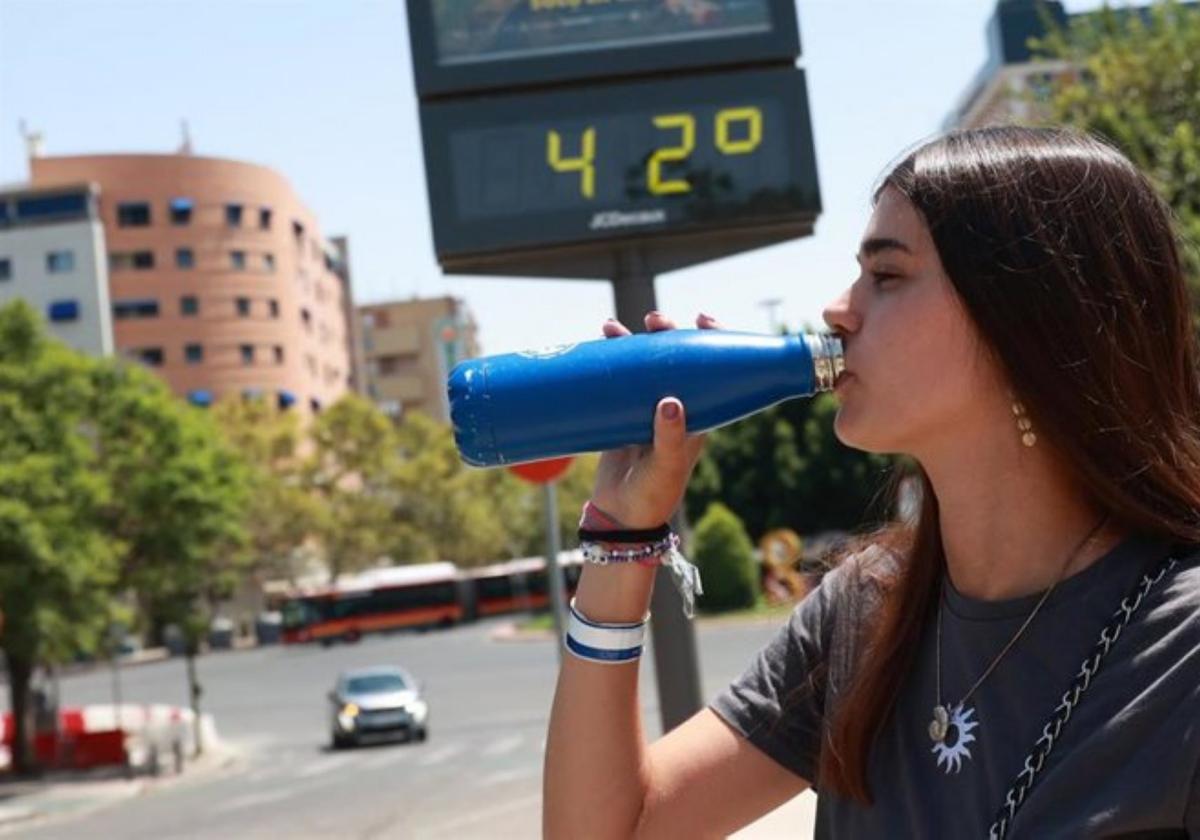Heat stroke cases on the rise as experts warn of 'earlier, more intense and longer lasting' heatwaves
The Junta de Andalucía has activated its plan to protect the most vulnerable people from the negative effects of the high temperatures
The first heatwave of the summer has arrived in full force, with temperatures exceeding 40C in parts of Spain, and the Junta de Andalucía regional government has activated the plan to combat the most severe effects heat has on people's health.
Since 16 May, nine cases of heatstroke have been registered in the region, one of which resulted in a death in Cordoba. The consequences of these heatwaves are becoming increasingly serious. According to the regional ministry of health and consumer affairs, the past month has already overtaken the same period in the past five years in terms of heat-related health accidents. In 2020 and 2023, there were six cases of heat stroke; one in 2021; four in 2022. There were seven deaths in 2024.
According to the regional ministry, incidences of heatwaves will increase in the future due to the effects of climate change. For this reason, regional minister of health Rocío Hernández and her department have committed to the prevention plan that has been in place for more than two decades. The aim is to carry out the coordination and action protocol and protect the most vulnerable groups of people.
The groups most at risk are people over 65 years of age with previous pathologies, pregnant women, homeless or disabled people and children under four years of age, especially infants.
In addition, people who perform outdoor physical activities while exposed to the sun, whether for work or sports, are also at risk. The plan will be operational until 30 September, with the possibility of being extended until October if the high temperatures continue.
The regional ministry's plan relies on the collaboration of multiple departments and administrations, such as the regional ministries of social inclusion, the presidency, education, tourism, culture and employment and the 112 emergency services. Once state meteorological agency Aemet announces a heatwave forecast, the regional ministry of health establishes one of four alert levels, from no risk to red alert. It is also the regional ministry's responsibility to identify the most vulnerable population groups in order to guide and prioritise preventive measures in each institutional area.
Exposure to high temperatures causes direct effects to the body, such as heat exhaustion, with signs and symptoms including intense thirst, weakness, malaise, anxiety, dizziness, nausea and headaches.
'Earlier, more intense and longer lasting' heatwaves
Heatwaves come hand in hand with climate change, which means that they have started to extend their reach beyond the summer, as high temperatures can now be experienced even in the autumn months. General director of public health and pharmaceutical organisations Manuel Fernández told SUR that heatwaves are increasingly occurring "earlier, ahead of their usual time, and are more intense and longer lasting due to the high temperatures", all linked to the effects of climate change. Manuel Fernández predicted that these heatwaves will increase in the future, warning that Andalucía is at the forefront of the most affected areas - a prediction evidenced by the circulation of mosquitoes that transmit the West Nile Virus.
Fernández urged the public to act responsibly, stating that it is not only the most vulnerable groups of people that are at risk. "No one is exempt from suffering a heatstroke, no matter how well and healthy they are," he said. Fernández recommended some tips for preventing incidents, such as protection from the sun, avoiding going out in the middle of the day, staying cool and hydrated, maintaining a healthy and appropriate diet for the season, wearing comfortable clothes and a hat and keeping the house cool by closing doors and blinds.

